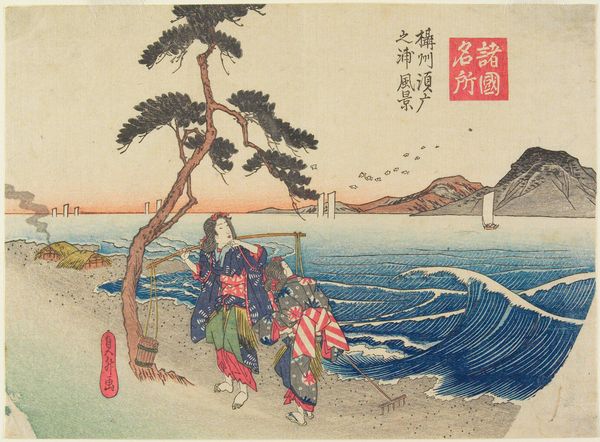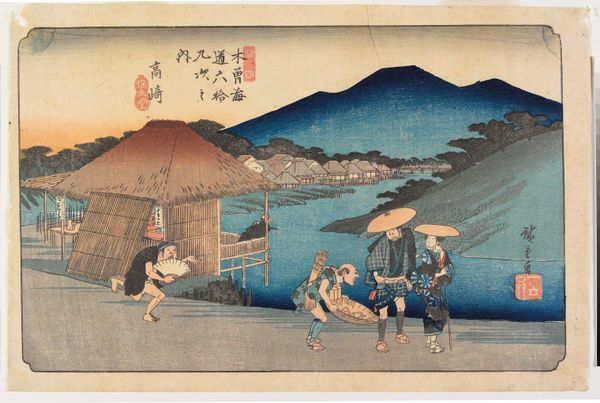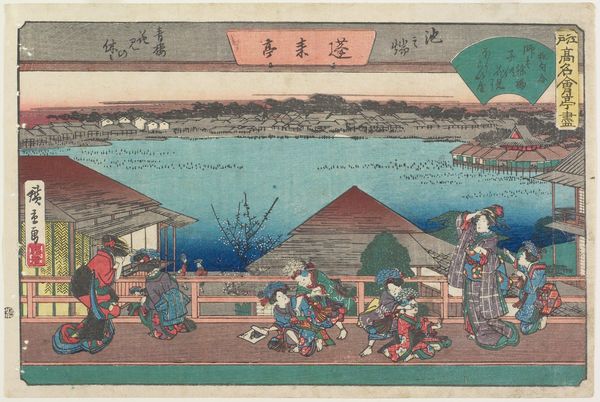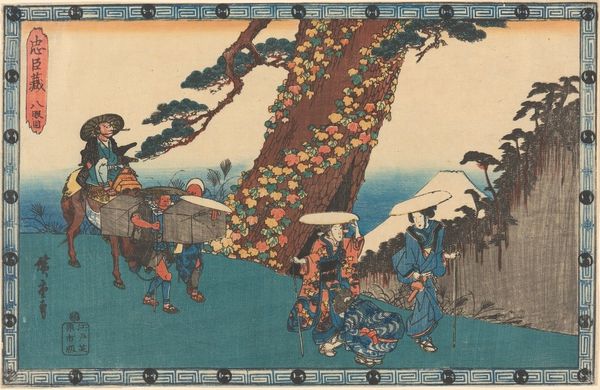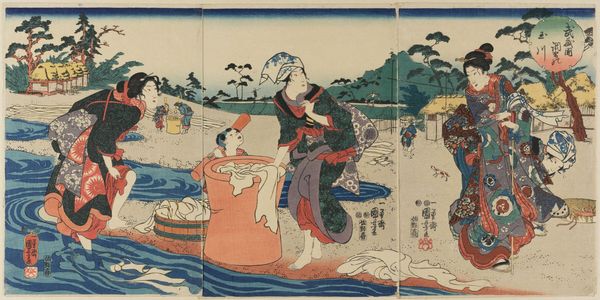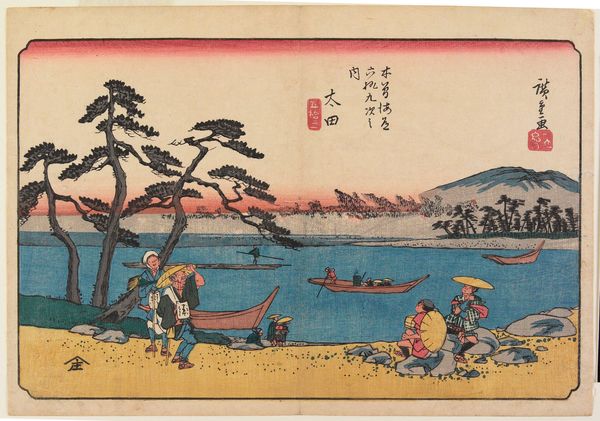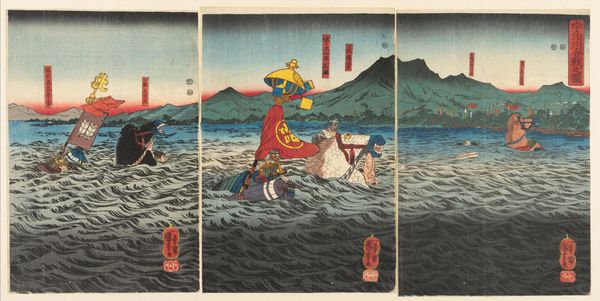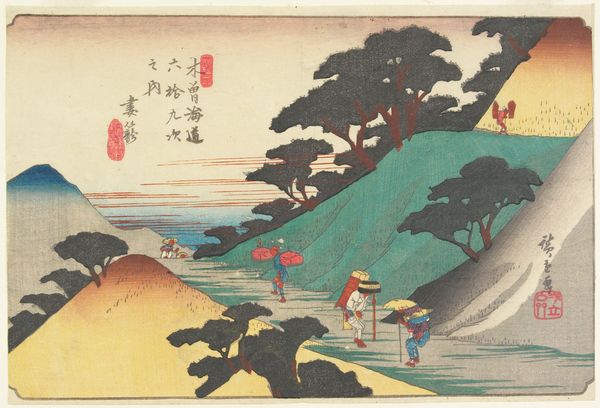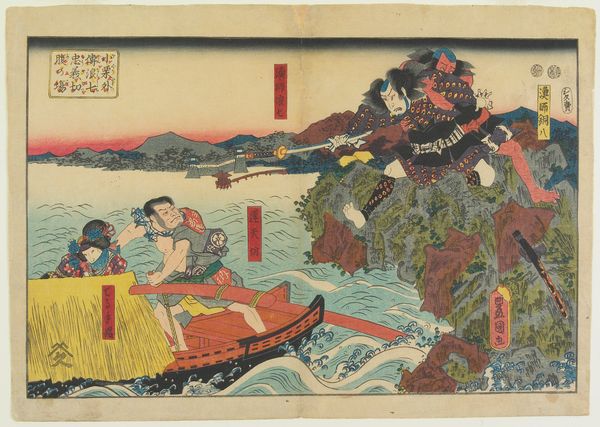
print, ink, woodblock-print
# print
#
asian-art
#
landscape
#
ukiyo-e
#
ink
#
woodblock-print
#
history-painting
Dimensions: 9 5/8 × 14 1/8 in. (24.4 × 35.8 cm) (image, horizontal ōban)
Copyright: Public Domain
Curator: Here we have Utagawa Hiroshige’s woodblock print "Kumagai and Atsumori in Combat," dating from around 1835 to 1839. It's an impactful piece currently residing here at the Minneapolis Institute of Art. Editor: My immediate response is the intensity! The composition really emphasizes the brutal encounter taking place, while the setting – the serene water and distant mountains – presents such a sharp, almost jarring contrast. Curator: Exactly, that tension is key! This print illustrates an episode from the Tale of Heike, a classic of Japanese literature, and that contrast speaks to the tragic undercurrent of the story itself. We have the celebrated warrior Kumagai Naozane locked in battle with the young, noble Atsumori. It's a struggle imbued with the political strife of the Genpei War. Editor: The artist seems aware of how history will judge this moment. Beyond the depiction of violence, there's this consideration of personal cost to men fighting the battles of empire, right? We see how identities—warrior, hero, enemy, youth—are really put into conflict. Is the water a baptismal symbol before violent deaths? Curator: Absolutely, and consider how prints like these played a public role, cementing narratives of loyalty, duty, and even sacrifice for the broader audience. It certainly invites reflection on these very specific historical concepts, which in our moment seem antiquated, although our cultures of warfare have only intensified since. What does it mean to depict an Asian conflict here, today? Editor: What strikes me most is Atsumori's visible youth and innocence, captured even in that decisive moment of combat. The artist clearly elicits some empathy. His vulnerability lays bare questions of power and the way these historical events are gendered too. His sacrifice becomes all the more potent in the history making and nation building Hiroshige participates in. Curator: Hiroshige deftly balances a grand narrative of war with very human, personal tragedies unfolding on the sandy shore, giving voice, in a way, to individual experiences amidst political events, inviting commentary, all while operating under institutional structures that dictated much of what was created in his era. Editor: Seeing the artwork today helps unpack that legacy of image-making, and hopefully we are pushed to reckon with power dynamics and ongoing identity conflicts on both a local and a global scale.
Comments
No comments
Be the first to comment and join the conversation on the ultimate creative platform.
